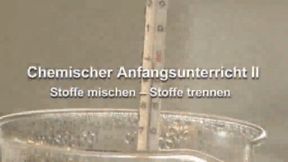
55500706
Elemente im PSE
In unserem Arbeitsheft Chemie 6-8, Vol. 1 – Elemente im PSE finden Sie 50 interaktive und didaktisch aufbereitete Aufgaben.
Included Tasks
- 1. 1. Hauptgruppe - Die Alkalimetalle - Interaktive Aufgaben mit Video
- 2. Alkalimetalle - Chemische und physikalische Eigenschaften
- 3. Alkalimetalle - Flammenfärbung und physische Eigenschaften
- 4. Alkalimetalle - Reaktion mit Halogenen - Aufgaben mit Video
- 5. Alkalimetalle im Haushalt - Aufgaben mit Video
- 6. Alkalimetalle - Reaktion mit Wasser - Aufgaben mit Video
- 7. Geschichte des Periodensystems - Aufgaben mit Video
- 8. Chemische Elemente - Ordnungszahl richtig zuordnen
- 9. Chemische Elemente - Atommasse richtig zuordnen
- 10. Ordne den Elementen die Eigenschaften zu - Interaktive Aufgaben
- 11. Ordne dem Element die Eigenschaften zu - Interaktive Aufgaben
- 12. Elemente - Finde die Bildpaare
- 13. Chemische Elemente - Sortiere nach Gruppen - Interaktive Aufgaben
- 14. Alkalimetalle in das PSE einordnen - Interaktive Aufgaben
- 15. Symbole und Ordnungszahlen im PSE - 5 interaktive Aufgaben (1)
- 16. Symbole und Ordnungszahlen im PSE - 5 interaktive Aufgaben (2)
- 17. Symbole und Ordnungszahlen im PSE - 5 interaktive Aufgaben (3)
- 18. Symbole und Ordnungszahlen im PSE - 5 interaktive Aufgaben (4)
- 19. Symbole und Ordnungszahlen im PSE - 5 interaktive Aufgaben (5)
- 20. PSE - 10 Zufallsaufgaben aus 25er Aufgabenpool
- 21. PSE - Protonen Neutronen und Elektronen - Aufgaben mit Video
- 22. PSE - Elektronenschalen - Aufgaben mit Video
- 23. Aussagen zu Elementen überprüfen - Interaktive Aufgabe
- 24. Aussagen zu Elementen überprüfen - Interaktive Aufgaben (1)
- 25. Aussagen zu Elementen überprüfen - Interaktive Aufgaben (2)
- 26. Aussagen zu Elementen überprüfen - Interaktive Aufgaben (3)
- 27. Aussagen zu Elementen überprüfen - Interaktive Aufgaben (4)
- 28. Aussagen zu Elementen überprüfen - 10 interaktive Aufgaben
- 30. Formeln die richtigen Namen zuordnen - Interaktive Aufgabe
- 30. C, CO2 & CO im Alltag - Aufgaben mit Video
- 31. Kohlenstoff im Alltag - Aufgaben mit Video
- 32. Kohlenstoffverbrennung - Aufgaben mit Video
- 33. Kohlenstoffvorkommen - Interaktive Aufgaben mit Video
- 34. Die Kristallstruktur - Aufgaben mit Video
- 35. Definition Kristall - 4 Aufgaben als Druckvorlagen
- 36. Was ist ein Kristall - Aufgaben mit Video
- 37. Natriumchlorid - 2 Aufgaben als Druckvorlagen
- 38. Geometrie von Kristallen - Aufgaben mit Video
- 39. Chemische Elemente - Steckbrief - Aluminium - Interaktive Aufgabe
- 40. Chemische Elemente - Steckbrief - Bor - Interaktive Aufgabe
- 41. Elementen das richtige Aussehen zuordnen (1)
- 42. Elementen das richtige Aussehen zuordnen (2)
- 43. Edelgase - 5 Interaktive Aufgaben (1)
- 44. Edelgase - 5 interaktive Aufgaben (2)
- 45. Edelgase - 5 interaktive Aufgaben (3)
- 46. Edelgase - 5 interaktive Aufgaben (4)
- 47. Eigenschaften von Aluminium - Aufgaben mit Video
- 48. Reaktion von Eisenoxid mit Aluminium - Aufgaben mit Video
- 49. Aluminium - Eloxiervorgang - Aufgaben mit Video
- 50. Aluminium Eloxieren - 3 Aufgaben als Druckvorlagen
Curriculum-centred and oriented towards educational standards
Matching
Chemie des Alltags
In unserem Arbeitsheft Chemie 8, Vol. 1 – Chemie des Alltags finden Sie 50 interaktive und didaktisch aufbereitete Aufgaben.
Basics of Chemistry II
When we take a closer look at substances, we discover that they consist of either one single element or of mixtures of several elements. Chemists therefore divide the world of substances into pure and mixed chemical substances. A pure substance is of homogeneous composition. Substance mixtures, however, consist of two or more pure substances. The many mixtures are subdivided not only into homogeneous and heterogeneous mixtures but depending on the respective aggregate states of their components, are classified into various groups of mixtures.








